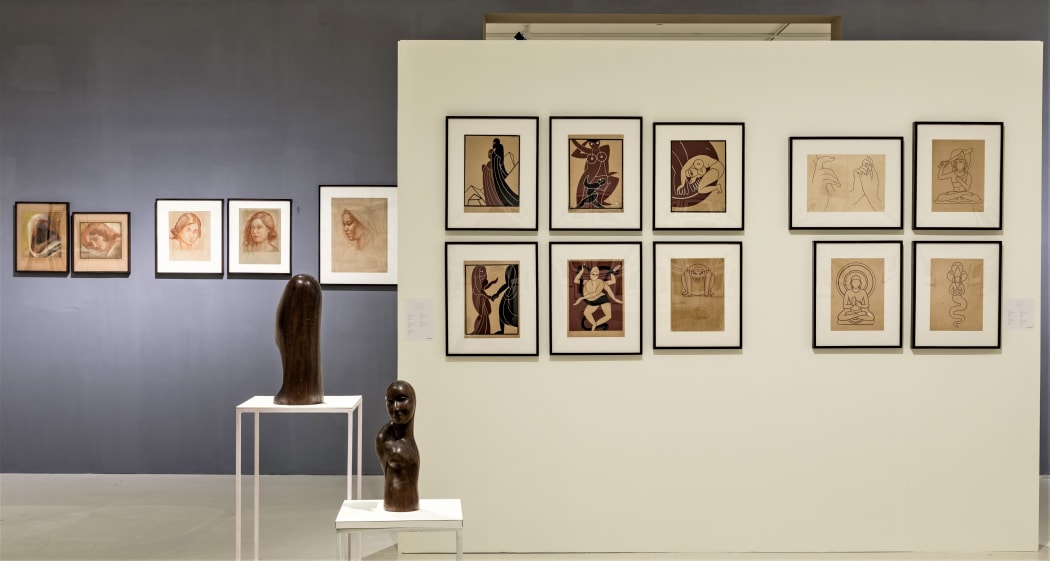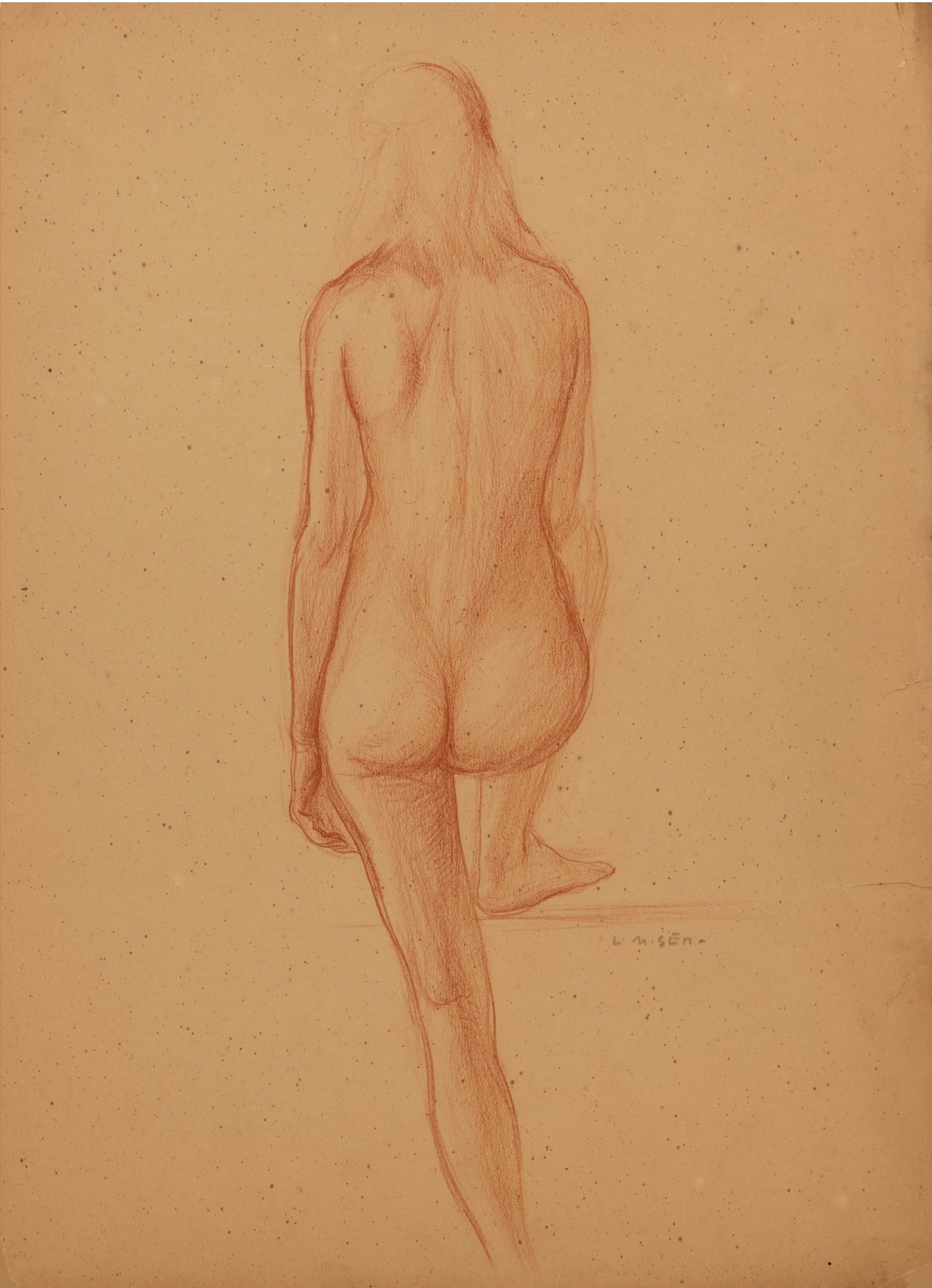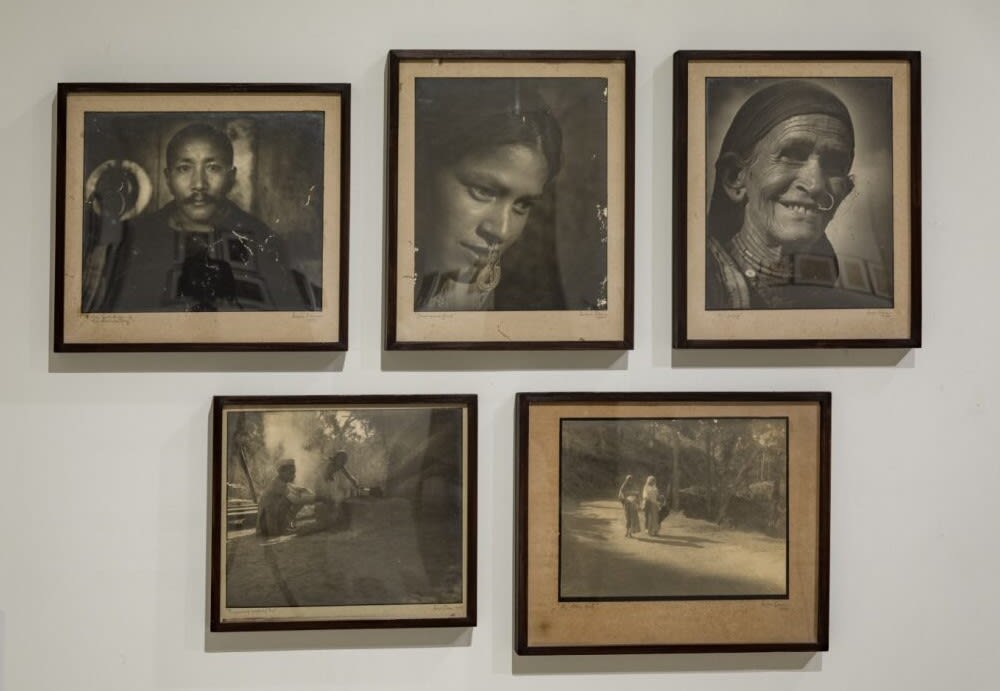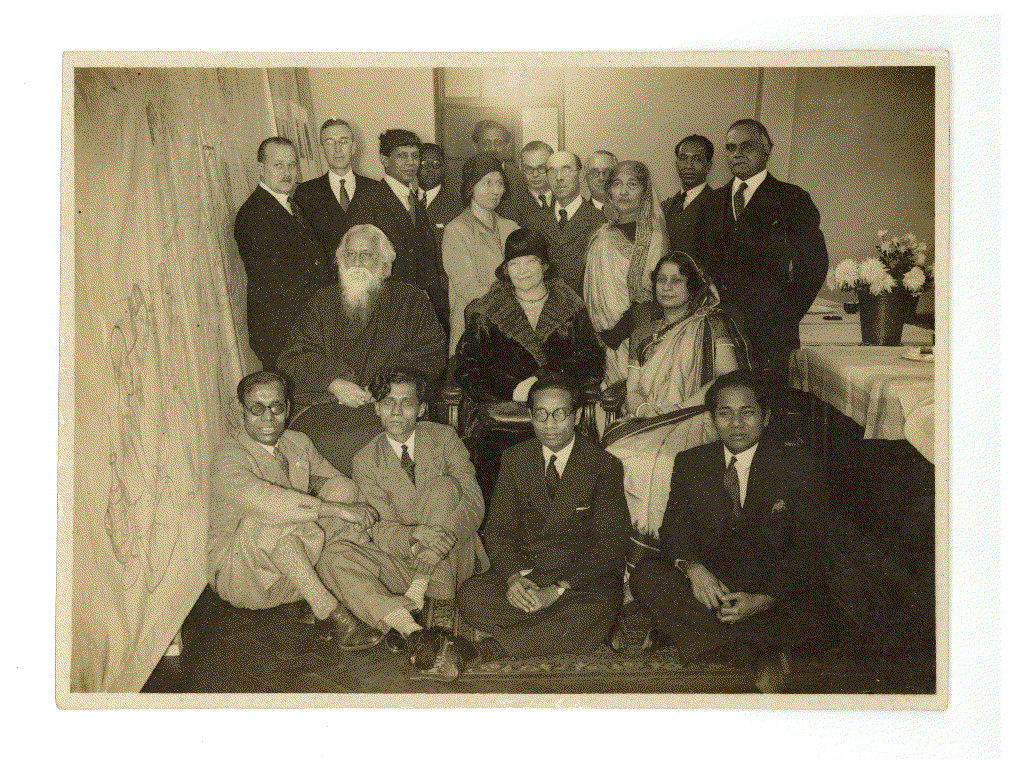
It is rather difficult not to be mesmerized while exploring the rich tapestry of 20th-century Indian art. During that time, several schools of thought and art movements flourished, such as the Bengal School movement, Santiniketan School, the Madras Art Movement, and so many more. While each artist tried their best to retain their voice, the collectivization of art practices through these distinct schools of thought often led to a hegemonized output, which is in no way a commentary on the quality of work but rather a social observation. Would you not call Abanindranath Tagore or Nandal Bose extraordinary artists but at the same time not recognize the similarity in their choice of subjects or, rather, precisely the style in which they portray the subjects in their paintings?
Amidst the plethora of talented 20th-century Indian artists, there existed a luminary whose brilliance has often been overshadowed by his contemporaries, but it is beyond a shadow of a doubt that Lalit Mohan Sen (1898-1954) has left an indelible mark on the country’s artistic landscape. To compare him with his contemporaries is a fool’s errand, but rather it is a more interesting venture to explore what sets him apart. I think the operative word is versatility. Was Lalit Mohan Sen a painter? A sculptor? Was his medium linocut printmaking? Or was it photography? Or was he an Indian man from the Gandhian era who designed travel posters, book covers, and even sarees? His mediums of expression included all the above, which is the kind of artistic ambidexterity that fascinates me most about his oeuvre. He was not afraid to experiment and create a modus operandi that spans different styles and mediums.
The exhibition has indeed marvellously captured the versatile essence of his enduring legacy. The portraits by Lalit Mohan Sen are a veritable testament to his brilliance. In some of his portraits, one can find clear evidence of his academic training in Western Art. The treatment of light and shadows, proportion, perspective, choice of background and his usage of mediums such as oil pastels, woodcut, and tempera reflect a Western Realist aesthetic fused with his personal flair. His choice of subjects is diverse and transcends boundaries starting from a woodcut portrait of arguably the most eminent Bengali literary figure and ranging diversely to include a portrait of even the most infamous fascist dictator in history made with red pigment on paper.



His choices of subjects are also not just eminent historical figures but everyday men and women. In his sketches of nude figures, one can witness his flair for Renaissance realism, much akin to a Donatello or a Da Vinci study of anatomy. However, when we closely examine his watercolour portraits, which include abstract portrayals of dancing figurines, deities and animals, he completely shifts from Western pedagogy and embraces a more Bengal School style. Lalit Mohan Sen possessed this innate ability to maintain the distinctions between two completely different schools of art and mould them into two unique paths of creative expression. His study of hand gestures and figures of deities through fluid and rhythmic line drawings also shows the influence of classical Indian art, as we see in the mythical Buddhist figures of the Ajanta and Bagh cave paintings. He mainly used earth colours and was a keen observer who, like all good artists, could see through the eyes of his subject.

Figure Study by LM Sen, Crayon on paper

Woman with a Veil by L.M.Sen, Wood
While maintaining a clear distinction between Western Realism and various Indian or Eastern schools of art, when one walks through the exhibition and comes closer to viewing the sculptures, we can see an amalgamation of Western and Eastern influences. The sculpture titled Woman with a Veil enfolds the innate emotion and expressive nature of Indian art, the spiritual embodiment of Buddha's smile while simultaneously capturing the realistic grandeur of Western Realism. It brings to memory the harmoniously rounded and minimal sculptures of Constantin Brâncuși, a 20th-century modern Romanian sculptor.
Lalit Mohan Sen understood that the closest a visual artist can come to embodying realism is through the medium of photography. As one saunters through the exhibition, on its walls, one can intermittently notice photographs and the paintings inspired by those photographs juxtaposed. One such vivid example is in an oil painting of a woman harvester and a black and white photograph of the same subject hanging beside each other, clearly evoking two different sensations for the viewer. The painting portrays a bright and sunny day of harvest, with the brush strokes integrating the spirit of an impressionist painting. On the other hand, the photograph brings out the simplicity and softness of a regular day in the pastoral life of a woman harvester, where the absence of colours places more focus on the subject herself.

Photographs by LM Sen, Silver gelatin prints

Smiling Gold by LM Sen, Oil on board and its reference photograph (to the left)
Lalit Mohan’s Sen’s photographic treatment of feminine subjects, particularly his photo series capturing the women of the Garhwal regions, Travancore and Burma, deserve a closer inspection. The most striking facet of this diverse collection of monochrome photographs is the powerful range of emotions each of his subjects conveys. Innocence, beauty, power, mystery and a whole plethora of attributes are conveyed through these photographs. In the photo series, Sen chose to capture the women in their domestic settings and in their traditional attires, which goes beyond the purview of only aesthetics and does justice from an ethnographic standpoint. The exhibition also houses many glass plate negatives of the early 20th century used by Sen. It is said that the maestro preferred the silver-gelatin coated dry plates even though they were rudimentary. He opted for this unique process as the glass provided a sharper, more detailed negative. The endurance of these negatives further encapsulates the essence of Sen’s photography, providing a tangible connection to the past by treating the viewers to a skeletal view of his subjects.

The Temple Corner by LM Sen, Oil on board
Sen once said, "The first merit of a picture is to feast the eyes. I mean by a picture the work of an artist which is a beautiful, romantic creation, illumined with light better than any ever shone, of the themes of a land no one could define or remember but desire, and the forms divinely beautiful.” These words resonate thoroughly in Lalit Mohan Sen’s landscape paintings in oil and pastel. Although his landscape paintings are much scantier in the exhibition compared to his portrait work, his study of nature and light in his landscape paintings shines through his vivid, expressive brush strokes, as evident in the painting titled The Temple Corner.
While exploring the gallery surrounded by Sen’s artistic eclectica, there is a slight moment of transcendence when one may realize that it is not just an exhibition space but more of an archive. One does not merely see his most famous linocuts of Tagore and Gandhi and walk out. The viewer gets immersed in his world, his oeuvre and the chronology of his artistic journey.

LM Sen with Tagore and others in London, Archival photograph
One can witness how his birthplace, Shantipur in West Bengal, with its famous textile tradition, influenced his artistry - how the knowledge he gained at the Government School of Arts and Crafts in Lucknow and subsequently at London's esteemed Royal College of Art allowed him to seamlessly blend or switch from the Western to the Indian tradition - how the geo-political circumstances of a pre-Independent India moulded him as an artist. The exhibition offers a window extending beyond the art and into Sen’s life as an artist and teacher. There are archival materials such as documents, personal letters, invitation cards, catalogues, diaries, sketchbooks, books, magazines, bulletins, order cards of artworks and his cameras.

Bulletin by LM Sen on Textile Printing by Hand

Letter from Professor Rothenstein to LM Sen
The immersive archival experience that teleports you into Sen’s world would not have been possible without the intricately immaculate curation by Emami Art in consultation with Debdatta Gupta and the efforts of Prabartak Sen, grand-nephew of LM Sen and his family, who have preserved the archival materials and objects that have added invaluable quality to the exhibition’s essence. The greatness of Sen’s artistry lies in the fact that he was able to define himself as a modern artist without adhering to modernity’s desire for stylistic singularity. Even though he garnered acclaim and recognition during his lifetime, the passage of time had shrouded his brilliance in relative obscurity. However, almost seventy years later, this exhibition has come a long way to rekindle his artistic flame and resurrect his rightful place in the annals of Indian art.
AUTHOR PROFILE

Vaaswat Sarkar completed his education from Jadavpur University Department of English. He is a writer for the South Asian art and culture digital publication, Homegrown and an educator for the US Consulate, Kolkata.